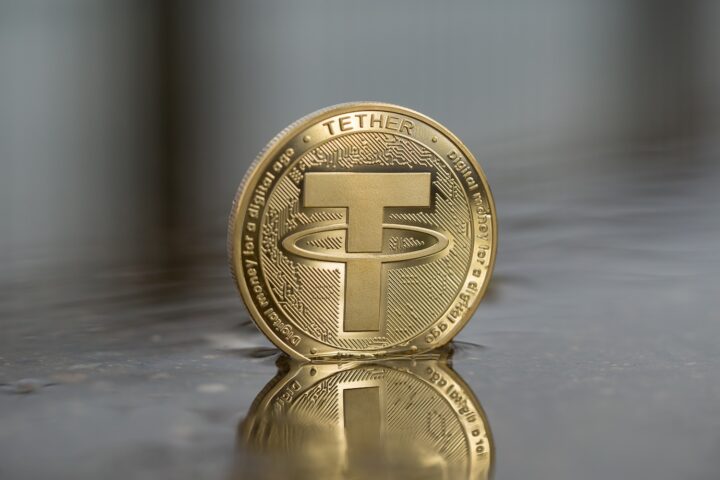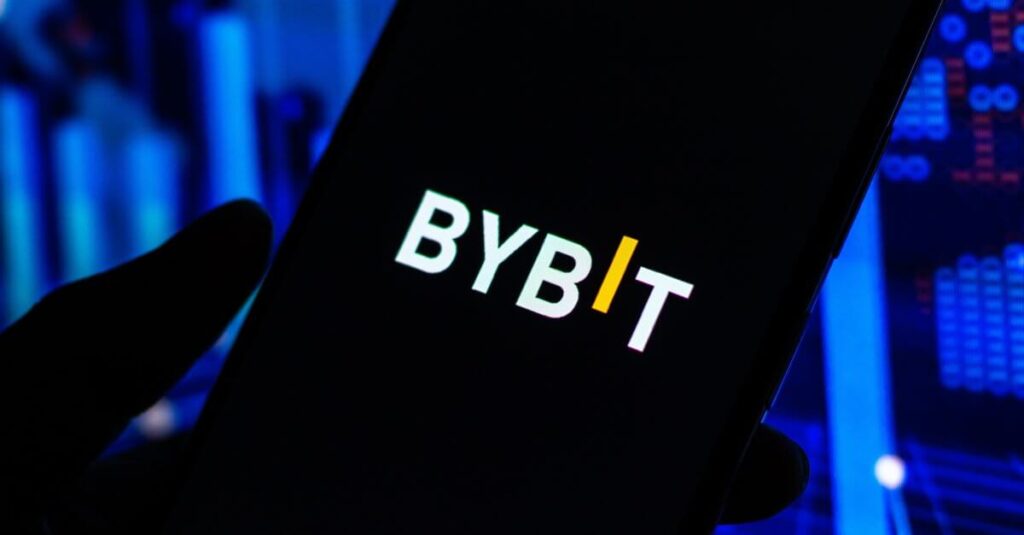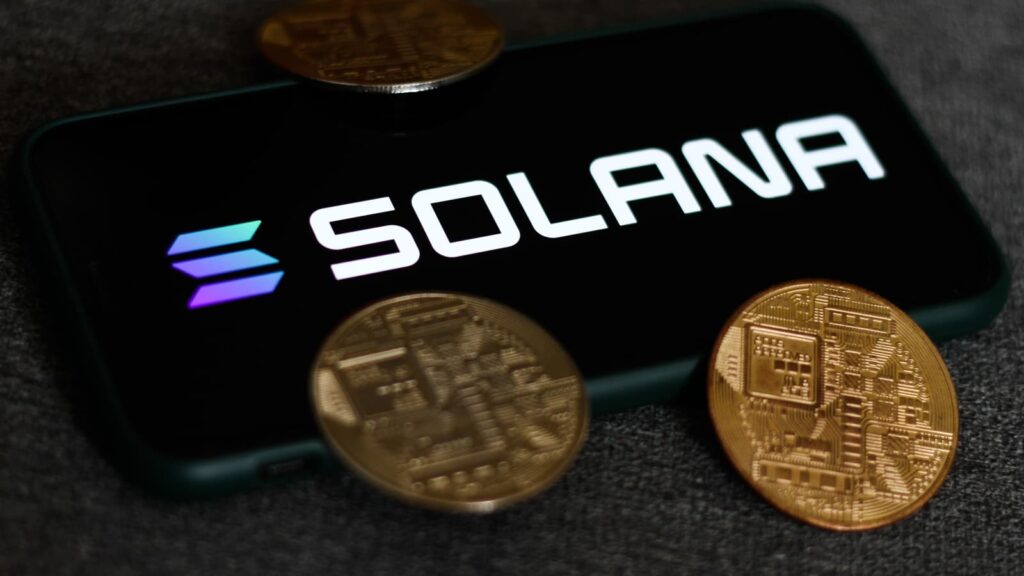Strategy, formerly known as MicroStrategy, is signaling another major Bitcoin acquisition following a brief pause. Co-founder Michael Saylor recently posted a BTC chart indicating that the firm is gearing up for another purchase.
On Feb. 10, the company acquired 7,633 BTC for over $742 million, bringing its total holdings to 478,740 BTC. As of now, Strategy’s Bitcoin reserves are valued at over $46 billion, marking a 47.7% increase on its investment, according to SaylorTracker.
Leveraging Bitcoin Investments
Saylor previously revealed that the company intends to intensify its “intelligent leverage” strategy in Q1 2025 to finance further Bitcoin purchases. As the largest corporate holder of BTC, Strategy aims to maximize shareholder value through continued acquisitions.
Institutional Investors Bet on Strategy
Despite concerns over sustainability, institutional investors remain confident in Strategy’s Bitcoin strategy. A Feb. 6 SEC filing revealed that BlackRock, the world’s largest asset manager, has increased its stake in the company to 5%.
Additionally, 12 U.S. states, including California, Texas, and Florida, hold Strategy stock in pension programs or treasury funds. California’s State Teachers’ Retirement Fund leads with nearly $83 million in Strategy stock, followed by the California Public Employees Retirement System with $76.7 million.
New Financing for BTC Expansion
On Feb. 20, Strategy announced a $2 billion convertible note offering to fuel additional Bitcoin acquisitions, further solidifying its commitment to Bitcoin investment.
Bybit recently suffered a $1.4 billion hack—the largest in crypto history—yet has maintained reserves exceeding its liabilities, according to DefiLlama.
The hack, which targeted liquid-staked Ether and other ERC-20 tokens, contributed to a $5.3 billion drop in Bybit’s total assets. Despite this, independent auditor Hacken confirmed that Bybit’s reserves remain fully backed.
Response and Industry Support
Bybit processed over 350,000 withdrawal requests within 10 hours, with CEO Ben Zhou emphasizing that all platform functions remain operational.
Crypto firms, including Binance and Bitget, provided emergency support, transferring significant amounts of Ether to assist the exchange. Meanwhile, security experts have linked the attack to North Korea’s Lazarus Group, which previously executed major crypto heists.
Blockchain analyst Meir Dolev indicated that Bybit’s Ethereum multisig cold wallet was compromised through a deceptive transaction, granting hackers control over the funds.
Bitcoin (BTC) has remained locked in a tight trading range for over two months, oscillating between $92,400 and $106,500 since December 18, according to Cointelegraph Markets Pro. Despite billions in institutional inflows, the cryptocurrency has failed to break out significantly.
A brief exception occurred on January 20, coinciding with U.S. President Donald Trump’s inauguration, when Bitcoin surged to an all-time high of $109,000 before swiftly retreating into its established range.
Market Manipulation Suspicions
Some industry leaders believe Bitcoin’s price stagnation may not be entirely organic. Samson Mow, CEO of Jan3 and founder of Pixelmatic, suspects deliberate price suppression. Speaking at Consensus Hong Kong 2025, Mow noted:
“If you look at the price movement, we peak, and then we stay steady and chop sideways. It just looks very manufactured.”
Mow further emphasized the unnatural nature of Bitcoin’s restricted price fluctuations, raising concerns about external forces shaping the market.
ETF Inflows and Institutional Buying Fail to Move Price
Despite steady accumulation by institutions and retail investors, Bitcoin’s price remains stagnant. Companies like Michael Saylor’s MicroStrategy continue to buy Bitcoin in large quantities, yet the price refuses to budge. According to Mow, this suggests that substantial selling pressure is counteracting these inflows.
“If Bitcoin’s price isn’t moving despite accumulation, then someone must be selling,” he explained.
FTX Repayments and Potential Sell-Off Pressure
Adding to market dynamics, FTX has begun repaying creditors, distributing over $1.2 billion based on Bitcoin’s November 2022 price of around $20,000. This could lead to increased selling pressure as recipients cash in on their gains. Mow pointed out that Bitcoin sales at mid-$20K levels are likely impacting market movements, preventing upward momentum.
Despite these concerns, analysts remain optimistic, with 2025 price targets ranging between $160,000 and $180,000. However, for now, Bitcoin remains firmly within its controlled price range.
Ether reserves across centralized exchanges have dropped to their lowest levels in nearly nine years, reinforcing optimism that the market may have reached a bottom. According to CryptoQuant data, Ether reserves across all exchanges fell to 18.95 million on Feb. 18, a level last seen in July 2016 when ETH was trading at approximately $14.
A declining Ether supply on exchanges often suggests an impending price rally due to a “supply shock.” This occurs when strong buying demand meets a decreasing available supply, potentially driving ETH prices higher.
Investors Move ETH to Cold Storage
The diminishing Ether supply indicates that investors are transferring their ETH holdings to cold storage for long-term security rather than preparing for short-term sales. Nicolai Sondergaard, a research analyst at Nansen, considers this trend “generally bullish,” noting a similar pattern for Bitcoin.
“We are seeing similar trends for BTC, which makes me think if we a) are seeing demand outpaces supply and, or, b) is this a natural shift toward self-custody and cold storage,” Sondergaard told Cointelegraph.
Resistance and Potential for Breakout
Despite this bullish indicator, Ether still faces significant resistance at $2,750 and $2,800. CoinGlass data suggests that a breakout above $2,800 could trigger liquidations of over $822 million in leveraged short positions, potentially accelerating an uptrend.
Ether ETFs Could Tighten Supply Further
Another key factor influencing ETH’s future price is the potential approval of staking for Ether exchange-traded funds (ETFs). Marcin Kazmierczak, co-founder at Redstone, believes this could significantly tighten Ethereum’s liquid supply, enhancing its appeal as an investment asset.
“The potential introduction of staking ETFs could be a game-changer, further tightening Ethereum’s liquid supply and reinforcing its value proposition as a prime investment asset,” he stated.
As of late 2024, twelve U.S. states have disclosed holdings in Strategy, formerly known as MicroStrategy, through their state pension funds or treasuries. Bitcoin analyst Julian Fahrer reported on February 17 that these holdings collectively amount to $330 million.
California Leads with Largest Holdings
Among the states, California has the highest exposure. The California State Teachers Retirement System holds 285,785 shares valued at $83 million, while the California Public Employees’ Retirement System owns 264,713 shares worth approximately $76 million.
California’s pension funds also have significant investments in Coinbase (COIN), holding over $155 million worth of stock.
Other Major State Investments
Florida’s retirement fund owns 160,470 shares of Strategy, valued at $46 million, while Wisconsin’s investment board holds 100,957 shares worth $29 million. Additionally, North Carolina, New Jersey, Arizona, Colorado, Illinois, Louisiana, Maryland, Texas, and Utah also have Strategy stock in their public investment portfolios.
Strategy’s Growth and Market Performance
Strategy, the largest corporate holder of Bitcoin with 478,740 BTC worth $46 billion, has seen its stock price surge by 16.5% in early 2025. Over the past year, its value has increased by an impressive 383%, significantly outperforming the broader crypto market’s 62% growth.
Following its rebranding to Strategy on February 5, the company has continued to position itself as a key player in Bitcoin-focused investments, attracting growing interest from institutional investors and pension funds.
Scammers impersonating Saudi Arabia’s Crown Prince Mohammed bin Salman have launched a fraudulent cryptocurrency, capitalizing on the growing hype surrounding celebrity-backed memecoins. The so-called “Official” Saudi Arabia memecoin (KSA) emerged on February 17, promoted through a fake X (formerly Twitter) account, “SaudiLawConf.”
Red Flags and Impersonation Tactics
The first warning sign was the absence of any official government announcement or details regarding the token’s purpose and structure. The Saudi Law Conference, the legitimate entity behind the hacked X account, confirmed the breach via a February 17 LinkedIn post.
“The conference management announces that the official conference account in the X platform (@Saudilawconf) has been hacked and that any content currently published through the account does not represent our opinions or official orientations in any way,” the post stated.
Growing Trend of Political Figure Memecoins
This scam follows the rapid collapse of another high-profile political memecoin. On February 15, reports surfaced that the LIBRA token, linked to Argentine President Javier Milei, lost over 94% of its value within hours. Insiders allegedly cashed out $107 million in liquidity, leading to a sharp price drop.
Investor Losses and Market Impact
Another key indicator of fraud was the early creation of the token contract. On February 10, a week before its public announcement, the KSA token was deployed on the Solana-based memecoin launchpad Pump.fun. Despite the fraudulent marketing efforts, the scam token struggled to attract investors, reaching only $7,489 in market capitalization.
This incident adds to the growing concern over the risks associated with politically-linked memecoins, which continue to cause substantial financial losses for unsuspecting investors.
Bitcoin (BTC) has broken out of a key technical pattern that has characterized its price movement over the past four years, and analysts predict this could set the stage for a significant price surge in the coming months.
The breakout came after Bitcoin surpassed the upper boundary of a “megaphone” or “broadening wedge” pattern, which typically signals a strong bullish move. This pattern is marked by a series of higher highs and lower lows, and when the price breaks through the upper trendline, it often leads to a parabolic rise. Bitcoin’s recent price action is seen by many as confirmation that the digital asset is poised for a significant upward trend.
Market analyst Gert van Lagen, who identified this pattern, now forecasts that Bitcoin could reach a price range between $270,000 and $300,000 by 2025. His analysis is supported by Elliott Wave Theory, which suggests that Bitcoin is currently in Wave (5), the final and typically most explosive phase of a bullish market. According to Lagen, this wave is likely to extend 1.618x to 2.0x the length of Wave (3), placing Bitcoin on track for substantial gains.
Moreover, comparisons to gold’s historical rise further bolster the bullish outlook for Bitcoin. Analyst apsk32 noted that Bitcoin has followed a trajectory similar to that of gold, a safe-haven asset, and could see its price soar as high as $400,000. Bitcoin’s growing adoption as a treasury asset by corporations, combined with institutional confidence in the cryptocurrency, further fuels this optimism.
Bitcoin’s role as a store of value is increasingly recognized, and many believe it could follow a similar path to gold, particularly as the U.S. government and other global institutions explore Bitcoin reserves. With influential investors and companies continuing to buy Bitcoin, its long-term value proposition looks stronger than ever, and the $270,000 to $300,000 target is seen as just the beginning.
Legislation around cryptocurrency in the United States is heating up, with several states introducing bills to regulate digital assets. The recent flurry of proposals aims to guide the incorporation of cryptocurrencies into state financial systems, with some even seeking to establish Bitcoin reserves.
North Carolina has taken the lead with a bill introduced in February that would allow the state treasurer to invest public funds in “qualified” digital assets, though the state would do so through exchange-traded products (ETPs) rather than directly purchasing crypto.
Speaker of the House Destin Hall, who championed the bill, emphasized that this move would position North Carolina as a leader in tech innovation. “This bill will position North Carolina as a leader in technological adoption & innovation,” Hall said. The bill has already passed its first reading and is being reviewed by the Committee on Commerce and Economic Development.
Michigan has also joined the movement, introducing a similar bill that would allow the creation of a state crypto reserve. The proposed legislation would permit the Michigan treasurer to allocate up to 10% of state investment funds to cryptocurrencies, either by purchasing crypto directly or through ETPs. It also includes provisions that would allow the treasurer to lend the crypto for further investment gains, provided it does not increase financial risk to the state.
Both of these bills reflect growing interest in cryptocurrency as an asset class within state governments, with proponents arguing that the inclusion of digital assets could make their states more competitive in the global economy. Some lawmakers are also taking inspiration from Texas, which has become a hub for crypto-friendly regulations.
This movement towards digital asset regulation is a direct response to the growing influence of the crypto industry in the U.S. As evidenced by the nearly $250 billion spent in 2024 to support pro-crypto candidates, cryptocurrencies are becoming a major political and financial topic in the country.
Coinbase CEO Brian Armstrong believes the U.S. is entering a transformative phase for cryptocurrency, calling it the “dawn of a new era for crypto.” He also forecasted that by 2030, as much as 10% of global GDP could be crypto-based.
“Up to 10% of global GDP could be running on crypto rails by the end of this decade,” Armstrong stated during Coinbase’s fourth-quarter 2024 earnings call on Feb. 13.
He likened today’s crypto adoption to the early 2000s when businesses had to adapt to the internet.
“Onchain is the new online,” he said.
If his prediction holds, it would mean more than $10 trillion worth of assets would be tokenized or onchain, given the World Bank’s estimate of over $100 trillion in global GDP.
Armstrong emphasized Coinbase’s role in this shift, telling investors:
“Coinbase is going to be the preferred partner to come in and build this for many of the companies out there.”
The company reported $2.3 billion in Q4 revenue, marking an 88% increase quarter-over-quarter.
He also highlighted the U.S.’s role in shaping crypto’s future, noting that “President Trump is moving fast to fulfill his promise of making the US the crypto capital of the planet.” Armstrong further pointed out that the U.S. now has its “most pro-crypto Congress,” which is advancing stablecoin and market structure legislation that could influence global adoption.
“Given the US leadership here, the rest of the world is taking notice and will be under pressure to embrace crypto adoption,” he said.
Meanwhile, Federal Reserve Governor Christopher Waller recently advocated for stablecoin regulations that would allow banks to issue dollar-pegged digital assets.
Looking ahead, Armstrong said Coinbase’s focus will be on “growing revenue with our existing products” while driving utility in emerging crypto sectors and building the foundation for long-term growth.
Asset management firm Franklin Templeton has established the “Franklin Solana Trust” in Delaware, signaling its intention to launch a spot Solana exchange-traded fund (ETF) in the United States. The trust was formed on February 10 by the CSC Delaware Trust Company, which has previously registered crypto trust products for other asset managers, including Bitwise.
To proceed with the ETF, Franklin Templeton must file a Form 19b-4 and a Form S-1 with the Securities and Exchange Commission (SEC). If approved, the Franklin Solana Trust would aim to track the price movements of Solana (SOL), currently the world’s fifth-largest cryptocurrency with a market capitalization of approximately $97 billion.
The filing did not specify which exchange would list the ETF. However, Franklin Templeton’s existing spot Bitcoin (BTC) and Ether (ETH) ETFs are both listed on the Cboe BZX exchange.
Franklin Templeton has previously expressed strong support for the Solana network, highlighting its resilience in overcoming “technological growing pains” and its demonstration of the potential of high-throughput, monolithic blockchain architectures.
Bloomberg ETF analysts James Seyffart and Eric Balchunas have estimated a 70% chance of an approved spot Solana ETF before the end of 2025. They noted that these odds increased significantly following President Donald Trump’s election victory in November.
On February 11, the SEC acknowledged Form 19b-4 filings for spot Solana ETFs submitted by 21Shares, Bitwise, Canary Capital, and VanEck. Earlier, on February 6, the SEC acknowledged Grayscale’s Solana filing, a noteworthy development given the agency’s previous rejections of similar applications under former Chair Gary Gensler.
Financial services firm JPMorgan has projected that an approved spot Solana ETF could attract between $3 billion and $6 billion in net assets within its first year. Analyst Eric Balchunas described this forecast as a “reasonable guess.”
As of now, Solana is trading at $198.5, reflecting a 1.5% decrease over the past 24 hours, according to CoinGecko data.










